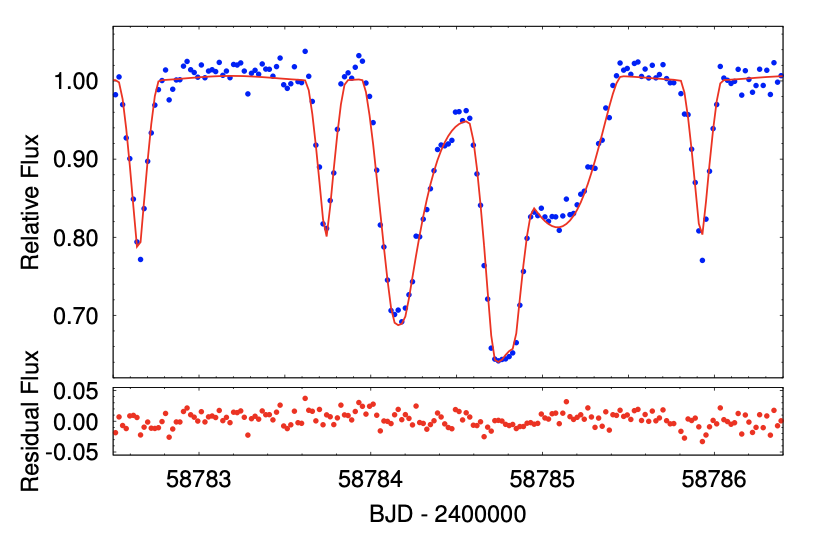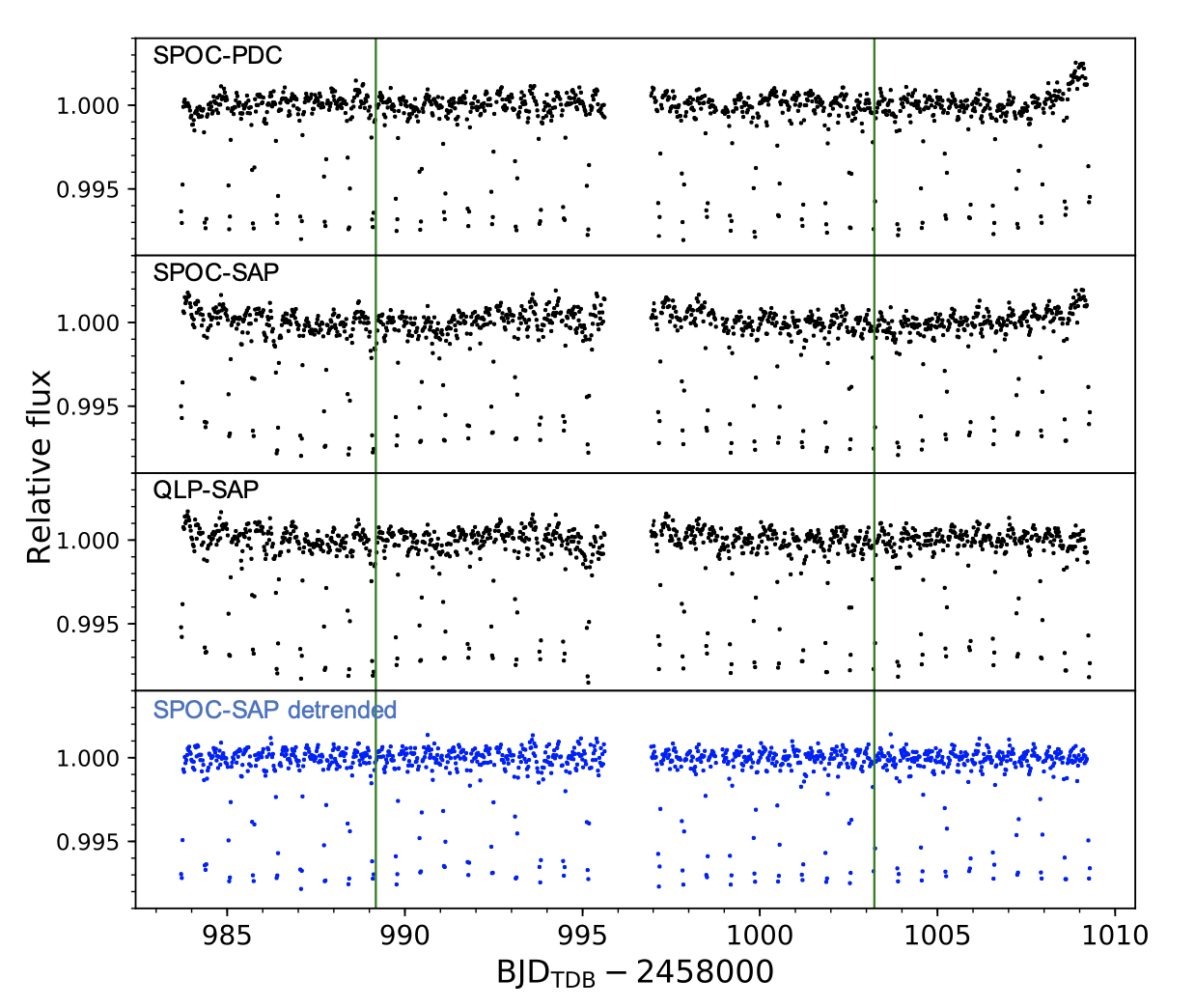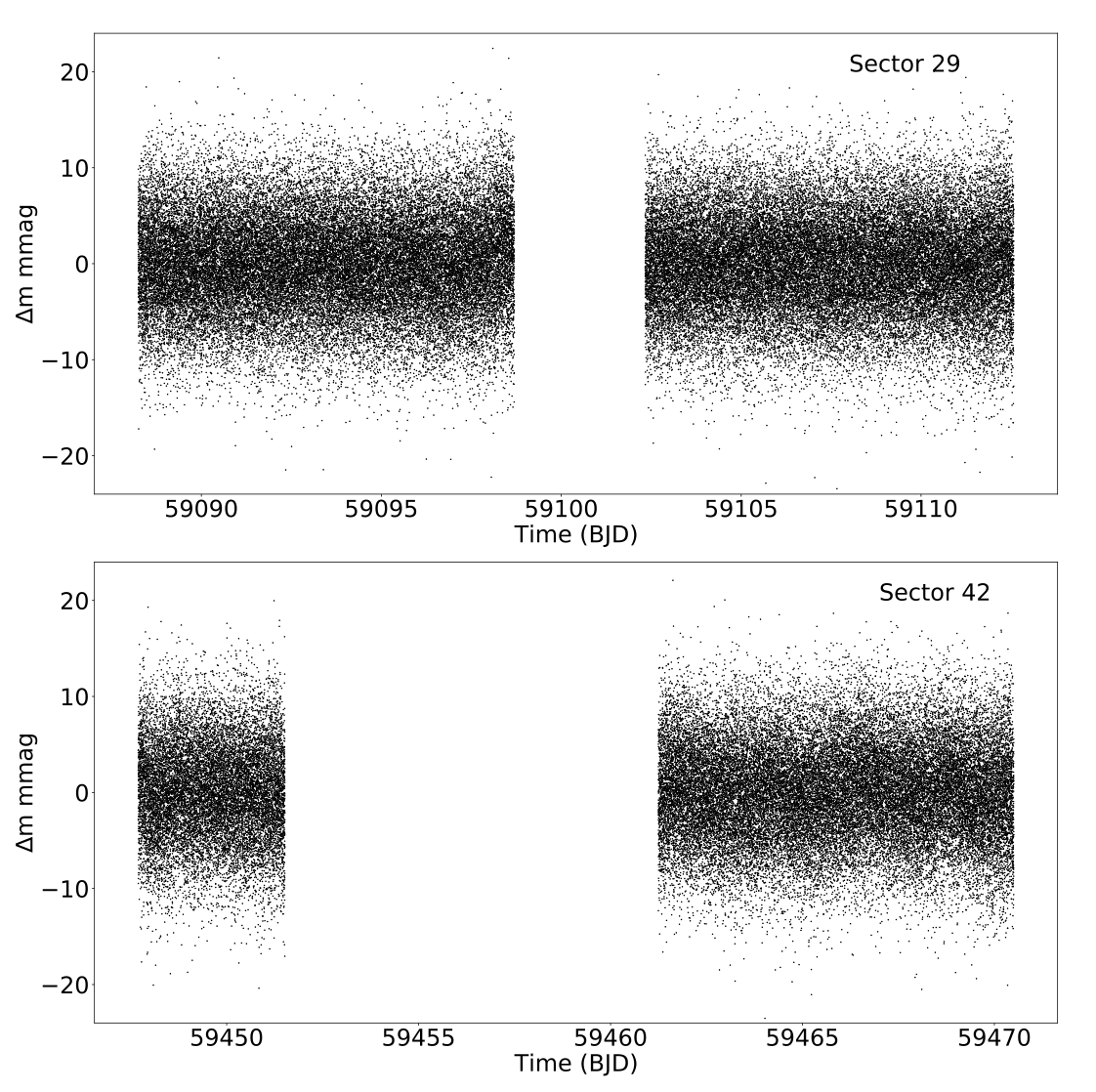STATUS UPDATE: Orbit 2 of Sector 44 is now available to download as a TICA product from MAST.
Welcome TESS followers! This week we are looking at three papers from the archive,
Triply eclipsing triple stars in the northern TESS fields: TICs 193993801, 388459317 and 52041148 (Borkovits et. al., 2021) :
TESS has been used to find three new triply eclipsing triple star systems: TICs 193993801, 388459317, and 52041148.
Utilizing the precision photometry provided by TESS in addition to other ground-based archival and follow-up observations, several of the systems parameters were derived or examined including: eclipse timing variations, spectral energy distributions, and theoretical evolutionary tracks which enabled the deduction of the system masses and orbital parameters.
By searching for longer-term periodicity in archival ASAS-SN photometry, the authors were able to find the orbital periods of the outer stars in each system, the values of which are 49.28 d, 89.86 d, and 177.0 d, respectively.
The full photometric analysis of all three systems revealed that they are all coplanar to within 1-3 degrees, and that the outer eccentricities are 0.003, 0.10, and 0.62, respectively. Masses of the three stars in the three systems were also derived and are listed as follows:
- TIC 193993801: 1.31, 1.19, 1.34 M ⊙
- TIC 388459317: 1.82, 1.73, 2.19 M ⊙
- TIC 52041148: 1.62, 1.48, 2.74 M ⊙
Where the masses listed denote the stars Aa, Ab, and B respectively.
TOI-2109b: An Ultrahot Gas Giant on a 16 hr Orbit (Wong et. al., 2021) :
In this paper the authors present the discovery of an Ultra hot Jupiter orbiting TOI-2109, an F-type star originally identified by TESS.
The planet is found to orbit its host with a short period of ~ 0.672 days (16 hrs) and has a radius of 1.347 RJup. The planetary nature of the object was confirmed by radial velocity measurements and a mass of 5.02 MJup derived.
The host star has an effective temperature of ∼6500 K, a mass of 1.447 MSun, a radius of 1.698 RSun, and a rotational velocity of vsini* =81.9±1.7 km s−1.
Using spectroscopic transit information the Doppler shadow was examined and it was determined that the system is likely well-aligned with a sky-projected obliquity of λ=1:7±1:7. The TESS light curve indicated a secondary eclipse with a depth of 731 ppm, phase-curve variations from the planet's longitudinal brightness modulation, and the ellipsoidal distortion of the host star.
Combing the TESS observations with those from the ground, the authors found that the dayside emission of TOI-2109b is consistent with a brightness temperature of 3631 K. This temperature would make TOI-2109b the second hottest exoplanet discovered to date.
TIC 5724661: A Long-Period Binary with a Pulsating sdB Star and δ Scuti Variable (Jayaraman et. al., 2021) :
The 20-second cadenced data provided by TESS has allowed for the detection of a unique binary system which is thought to consist of a δ Scuti primary star and a hot subdwarf B (sdB) secondary.
The δ Scuti star has pulsations over 32-41 d−1 and shares what is thought to be a wide orbit with it secondary. This secondary star also has large-amplitude p-mode pulsation at 524 d−1.
Using radial velocity measurements of the δ Scuti star the orbital period of the secondary must be at least 35 days, which is unusual for a sdB binary system. See this paper for more information about the system and how it might have formed.

Fig. 1: Taken from Borkovits et. al., (2021). The sole third body eclipse of TIC388459317 observed with TESS in sector 17. As above, blue dots represent the ob- served FFI fluxes, while the red curve represents the best fitting spectro-photo dynamical model. During this event the third star was eclipsed by the two inner binary stars.

Fig. 2: Taken from Wong et. al., (2021). Panels 1–3: the un-detrended light curves of TOI-2109 extracted by the SPOC and QLP pipelines, prior to our fitting analysis. The vertical green lines indicate the momentum dumps, which divide the light curve into four segments. Careful inspection of the phase-folded light curves reveals a strong phase-curve signal, as well as additional photometric modulations due to systematics and stellar variability. Panel 4: the systematics-corrected SPOC-SAP light curve, which was used to produce the final light-curve fitting results.

Fig. 3: Taken from Jayaraman et. al., (2021). The light curve of TIC 5724661 obtained in 20 s cadence in TESS Sectors 29 and 42 after processing with the SPOC pipeline (Jenkins 2015). The pulsations are too rapid and too low in amplitude to discern visually in this compressed figure. Its purposes are (i) to show the two gaps in the data, which affect the spectral window, and (ii) to show the noise level in the 20-s data points. The ordinate scale is Barycentric Julian Date – 240 0000.0.